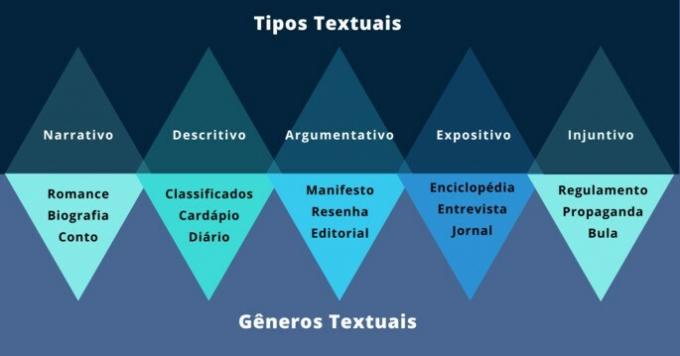The verse and the stanza are elements of the poetic text. Each line of a poem represents a verse, since the stanza is the set of verses.
Take, for example, the first part of the poem I'm leaving for Pasárgada, by Manuel Bandeira:
"I'm leaving for Pasargadae
There I am a friend of the king
There I have the woman I want
In the bed I will choose"
In this case, the phrase "I'm leaving for Pasárgada" is a verse, just like "There I am a friend of the king" is another verse, and so on. The four lines together form a stanza.
What is Verse?
A verse is a single sentence in a poetic composition.. It is the defining element of poetry, as opposed to prose. A set of verses with complete meaning is called a “stanza”.
Verses give rhythm, melody and meter to poetry. They can be classified according to the number of metric syllables, or poetic syllables, which are different from grammatical syllables.
To exemplify the verses and stanzas, we will use the poem song of exile, by Gonçalves Dias. Each line of this poem represents a verse.
My land has palm trees, (first verse)
Where Sabiá sings; (second verse)
The birds that chirp here, (third verse)
They don't chirp like there. (fourth verse)
types of verses
According to the number of poetic syllables of the verses, we have the following classification:
- Monosyllable: a poetic syllable
- Disyllable: two poetic syllables
- Trisyllable: three poetic syllables
- Tetrasyllable: four poetic syllables
- Pentasílabo or Redondilha Minor: five poetic syllables
- Hexasyllable: six poetic syllables
- Heptasílabo or Redondilha Major: seven poetic syllables
- Octosyllable: eight poetic syllables
- Enneasyllable: nine poetic syllables
- Decasyllable: ten poetic syllables
- Hendecasyllable: eleven poetic syllables
- Dodecasyllable or Alexandrine: twelve poetic syllables
- Barbarian verse: verse with more than twelve poetic syllables
What is stanza?
In poetry, a stanza is a unit within a poem, consisting of lines. In the stanzas, the sets of verses are ordered in such a way as to present a metrical correspondence with other stanzas.
Each set of verses, separated by the dotted lines, is a stanza. The poem below has 5 stanzas:
My land has palm trees,
Where Sabiá sings;
The birds that chirp here,
They don't chirp like there.Our sky has more stars,
Our floodplains have more flowers,
Our forests have more life,
Our life more loves.In brooding, alone, at night,
More pleasure I find there;
My land has palm trees,
Where Sabiá sings.My land has primes,
How about I don't find it here;
In brooding alone at night
More pleasure I find there;
My land has palm trees,
Where Sabiá sings.God do not allow me to die,
Without my going back there;
Without enjoying the primes
That I don't find around here;
Without even seeing the palm trees,
Where Sabiá sings.
stanza types
According to the number of lines present in each stanza, we have:
- Monostic: stanza of 1 line
- Couplet: 2-line stanza
- Tercet: 3-line stanza
- Quartet or Quadra: stanza of 4 lines
- Quintilla: stanza of 5 lines
- Sextilla: 6-line stanza
- Septile: stanza of seven lines
- Eighth: stanza of 8 lines
- Ninth: stanza of 9 lines
- Tenth: stanza of 10 lines
- Irregular: stanza with more than 10 lines
And what is the rhyme?
Another element of poetic text is rhyme. Returning to the poem song of exile, the second verse and the fourth verse of all stanzas have the ending of words with similar sounds, such as “sabiá” and “lá”, and “flores” and “amores”.
Rhymes are combinations of words that sound similar., make poetry more musical and sonorous.
In the case above, the rhyme was used at the end of the verses, called external rhyme, but it can also be used in the interior, being the internal rhyme. The use of certain types of rhyme varies according to the author's intention and the effect he wants.
types of rhyme
Alternating or cross rhyming (ABAB)
“The poet is a pretendpain. (A)
Pretend so completeente (B)
Who even pretends to be pain (A)
The pain that you really areente.” (B)(Excerpt from the poem autopsychography, by Fernando Pessoa)
In this excerpt, rhyme occurs between even and odd verses, where the 1st verse rhymes with the 3rd, and the 2nd verse rhymes with the 4th.
Interspersed or opposite rhyme (ABBA)
“Today, if you turn your face to me,ado (A)
step. And I, lower my eyes if I see youthis. (B)
And so we do, as if with this, (B)
we could sweep our passado.” (A)(Excerpt from the poem Indifference, by Guilherme de Almeida)
In the example above, the rhyme is found between the 1st and 4th line, and between the 2nd and 3rd line.
Paired Rhyme (AABB)
“To those who call me deputyado (A)
When I'm not even swornado, (A)
To those who are good and drool: mstress! (B)
I still write what I can'tThis one.” (B)(Excerpt from the poem Thanks, by Carlos Drummond de Andrade)
In the excerpt of this poem, the rhymes are found between the 1st and 2nd lines and between the 3rd and 4th lines.
See too:
- Stanza
- Poetry
- Poem
- twine
- rhymes
- Examples of textual genres


